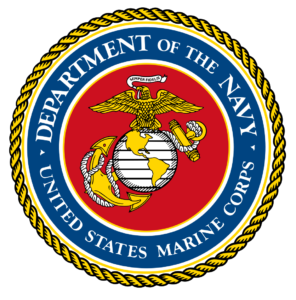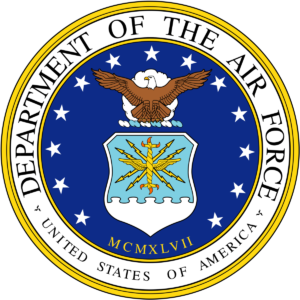Spiritual Fitness in the Military
Spiritual fitness is an important part of the overall fitness of a warrior. It gives the warfighter the strength to persevere in battle and the resiliency to recover after a battle. During World War II, Admiral Chester Nimitz said, “Even the finest weapons and the skill to use them, the stamina to keep them in sustained use, are not enough. There must be added to these things a spiritual armament…”[1] From the writings of Sun Tsu 2,500 years ago to today’s Admirals and Generals, the importance of spiritual fitness has been an important focus of our military leaders and strategists. Spiritual fitness is not just about preparing for war, it is about developing the resiliency to face today’s life challenges. It is about the ability to make ethical decisions. It is about reducing the risk of suicide and building relationships, camaraderie, and community.
Spiritual Readiness is the North Star of the Navy Chaplain Corps

jcHome0, “Sextant 3,” accessed April 15, 2023, https://www.deviantart.com/jchome0/art/sextant-3-268817531
The military services often look to their chaplains to help implement spiritual fitness. The Navy Chief of Chaplains highlighted the importance of chaplains undertaking the task of developing spiritual fitness in his 2023 Strategic Plan. The theme of this strategic plan is that the spiritual readiness of naval personnel and their families is the “North Star” of the Navy Chaplain Corps. This is to a population comprised of 80% men, 38% minority groups, and 16% Hispanic/Latino. The average age of an enlisted sailor is 27.6 and 34.9 for officers.[2] They belong to over 200 denominations and religious groups that includes Sikhs, Wiccans and Atheists. It states, “Everything we do at every level of supervision needs to have a straight line to the improved Spiritual Readiness of our people… Spiritual Readiness is our top priority.”[3]
What is spiritual readiness?
Here are some definitions from the U.S. Armed Forces:
U.S. Marine Corps – “Identification of personal faith, foundational values, and moral living from a variety of  sources and traditions help Marines live out Core Values of Honor, Courage, and Commitment, live the warrior ethos, and exemplify the character expected of a United States Marine.”[4]
sources and traditions help Marines live out Core Values of Honor, Courage, and Commitment, live the warrior ethos, and exemplify the character expected of a United States Marine.”[4]
U. S. A![]() rmy – “The ability to endure and overcome times of stress, hardship, and tragedy by making meaning of life experiences.”[5]
rmy – “The ability to endure and overcome times of stress, hardship, and tragedy by making meaning of life experiences.”[5]
 U. S. Air Force – “Spiritual readiness is the proactive practice of establishing a sense of purpose or personal priorities to develop the skills needed in times of stress, hardship and tragedy. Spiritual readiness may or may not include religious activities.”[6]
U. S. Air Force – “Spiritual readiness is the proactive practice of establishing a sense of purpose or personal priorities to develop the skills needed in times of stress, hardship and tragedy. Spiritual readiness may or may not include religious activities.”[6]
U .S. Navy – “Spiritual Readiness is the strength of spirit that enables the warfighter to accomplish the mission with honor. Spiritual Readiness speaks to the will to fight and the ability to overcome adversity in the moment of combat or crisis. The skill to fight without the will to fight leaves a hollow force.”[7]
.S. Navy – “Spiritual Readiness is the strength of spirit that enables the warfighter to accomplish the mission with honor. Spiritual Readiness speaks to the will to fight and the ability to overcome adversity in the moment of combat or crisis. The skill to fight without the will to fight leaves a hollow force.”[7]
Strategic vs. Tactical
While there is plenty of strategic guidance on the importance of spiritual fitness/readiness there is not a lot of tactical implementation or direction on how to develop spiritual fitness and how to measure it like you could with a physical fitness assessment. The Marine Corps did develop a spiritual fitness program with its own website to support it. It is a good program, but I never saw people using it when I was serving with the Marines. The Navy has a program called Warrior Toughness that is introduced at bootcamp and is designed to be reinforced in the fleet, but it is challenging to find people trained to deliver it. Being part of a faith community is known to be a great source for spiritual development, but many base chapels are closing due to lack of attendance by active-duty service members. Historically spiritual fitness has been focused on developing the warfighters will to fight. Today it also is focused on fighting the service members personal battles with loneliness, mental health and suicide. Herein lies the problem,
despite these great programs,
more people feel lonely and
more people have thoughts of suicide.
In 2019 the Marine Corps hit a record number of deaths by suicide. Leaders were and continue to be frustrated with the inability to reverse this trend. The pleading and anguish in this video of General Neller, 37th Commandant of the U.S. Marine Corps, is heartbreaking.[8]
The Problem
Meaningful relationships, a strong social network, and a sense of belonging are found in people who are most resilient and are spiritually fit. So why doesn’t spiritual fitness in the military and programs that address resiliency focus on this? In the definitions of spiritual fitness, the focus is on the individual warfighter not the fighting unit. When people are struggling, we send them to a counselor, or give them time off. As good as those things may be, they don’t help build meaningful relationships. Much of the efficiencies that have been put in place to streamline human resources and personnel issues have removed human interaction from the process and made it all web-based and automated. Isn’t this an important place to have human interaction?
The Research
Part of my research took place during a weekend personal resiliency retreat with a group of ten service members. I performed a pre and post spiritual fitness assessment using the SOCOM Spiritual Fitness Scale, had them complete a social network inventory, and I conducted face to face interviews. I found that they all recognized the importance of engaging with other people to better understand themselves and to face their life challenges. Many were hesitant to be part of a community but after the retreat realized that they could and should. The surveys also revealed a correlation between spiritual fitness and interpersonal support.
The Solution
The military should look at Spiritual fitness from a different perspective that includes and begins with the unit, the community, and then its individual members. Ironically this is historically intrinsic to military culture, but it has lost its importance and place in our modern digital age. Chaplains also need to help commanders evaluate what systems and processes cause isolation, which build connections, and make meaningful recommendations for awareness and improvement. Chaplains need to help commands build the esprit de corps that causes every member to feel they belong. This should be the foundational and first step in a successful implementation of spiritual fitness.
Although Jesus spent time alone to pray, his ministry and the work he did began with developing a group of friends and doing the work together. The Church is a body made up of many parts and Christian sacred texts say that when two or three are gathered, God will be among them. Christian, Jewish, Islamic and many other world religions place enormous importance on community and belonging. The military should too because this is how people become spiritual fit and resilient—through the interaction among friends and colleagues.
[1] Admiral Chester W. Nimitz, “Address to the U.S. Pacific Fleet”, June 19, 1944.
[2] “Chapter 1: Total DoD Military Force – 2021 Demographics Dashboards,” Military OneSource, accessed April 22, 2023, https://demographics.militaryonesource.mil/chapter-1-total-force-characteristics.
[3] Gregory Todd, Director of Religious Ministries Strategic Plan 2023, (Washington, DC: Department of the Navy, 2023), 3.
[4] “Spiritual Fitness,” United States Marine Corps, accessed April 22, 2023, https://www.fitness.marines.mil/Resilience/Spiritual-Fitness/.
[5] Borgeson, N. (2021). Holistic health and fitness: Building spiritual and mental resilience. Retrieved on 6 Jan 2023 from https://www.army.mil/article/243612/holistic_health_and_fitness_building_spiritual_and_mental_resilience.
[6] Department of the Air Force, The Enlisted Force Structure, Air Force Handbook 36-2618, (Washington, DC: Department of the Air Force, 2018), Section 4.4.6.4, https://www.afrc.af.mil/Portals/87/documents/PDC/afh36-2618.pdf?ver=2020-03-10-102348-690.
[7] Department of the Navy, Religious Ministry in the Navy, OPNAV INSTRUCTION 1730.1F, (Washington, DC: Department of the Navy, 2022), p. 2. https://www.secnav.navy.mil/doni/Directives/01000%20Military%20 Personnel%20Support/01-700%20Morale,%20Community%20and%20Religious%20Services/1730.1F.pdf.
[8] Robert B. Neller, “A Message from the Commandant of the US Marine Corps,” U.S. Marines, May 17, 2019, YouTube Video, 1:11, https://www.youtube.com/watch?v=rvAGr6L8pIE.